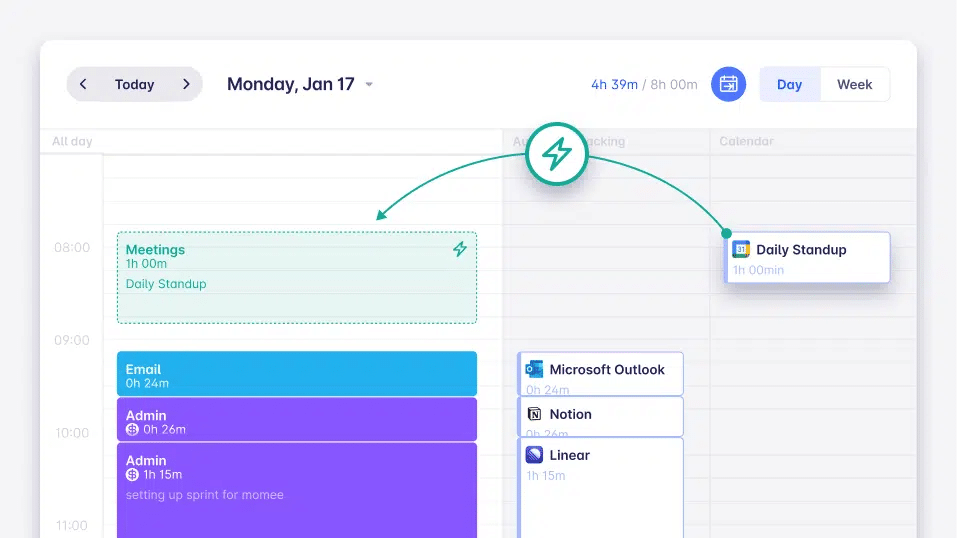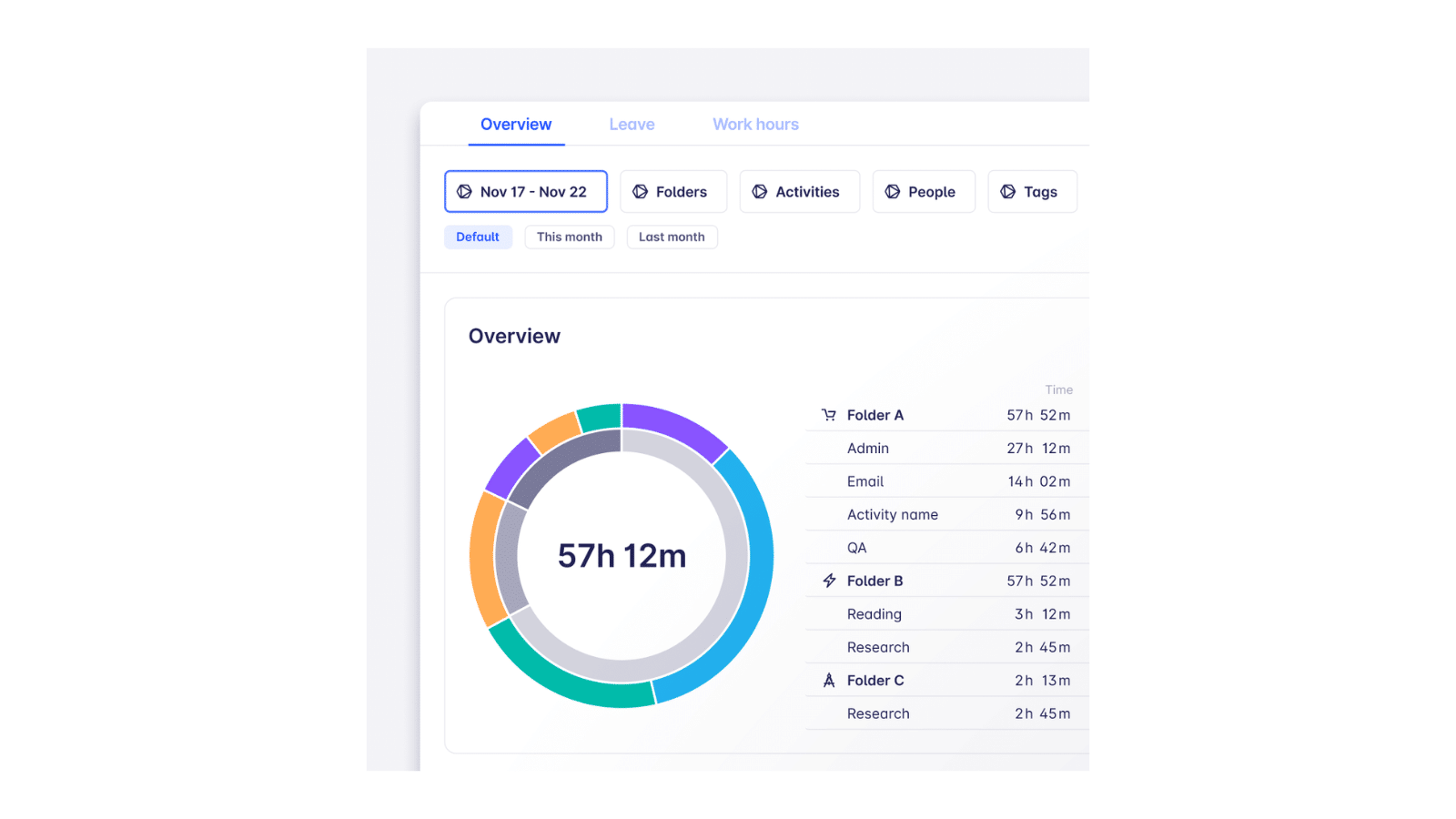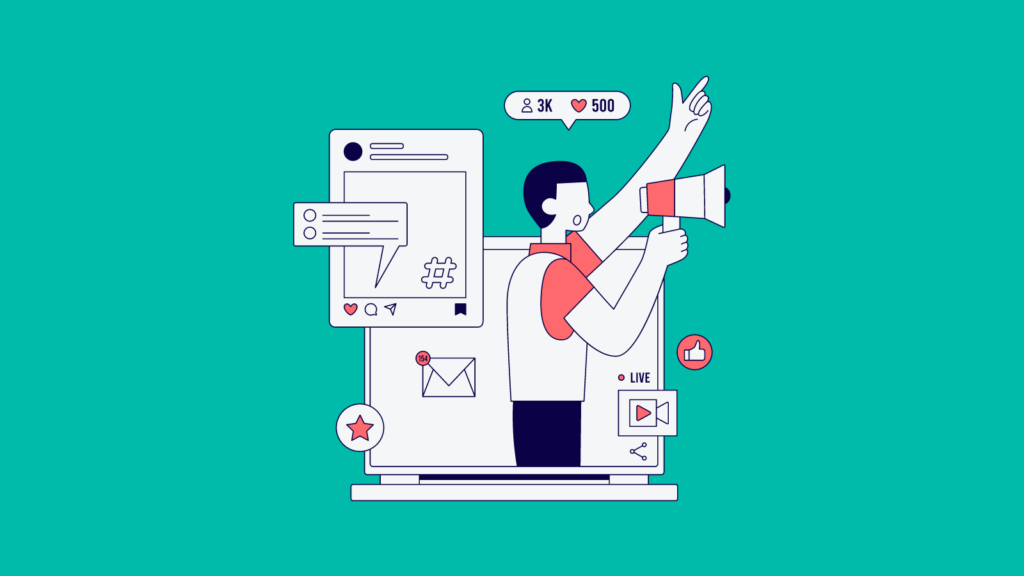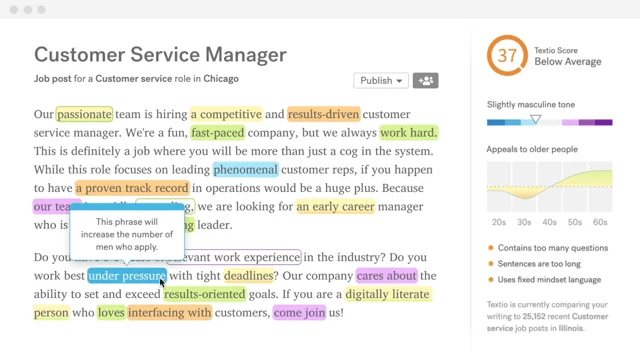Beispiele für KI in der Wirtschaft
Mit ChatGPT wurde die künstliche Intelligenz demokratisiert, und Unternehmen begannen, sie zur routinemäßigen Problemlösung einzusetzen. Und das mit großem Erfolg.
Von der Revolutionierung der Kundeninteraktion bis hin zur Rationalisierung von Abläufen - der Einfluss der KI ist exponentiell und geht über die selbstfahrende Technologie mit ihren autonomen Fahrzeugen oder Robotern hinaus.
Beispiele für KI in der Wirtschaft: 6 Anwendungsfälle
Laut einer Forbes-Studieräumen 4 von 5 Unternehmen der künstlichen Intelligenz in ihren Geschäftsprozessen höchste Priorität ein, was nicht überrascht.
Künstliche Intelligenz in der Wirtschaft bedeutet, dass KI-Systeme beim Zugriff auf Datensätze sehr schnell Muster erkennen und mit ihren generativen KI-Algorithmen einen großen Teil der Arbeit automatisieren.
Mache dir keine Sorgen, denn Deep-Learning-Algorithmen sind so weit entwickelt, dass sie keinen Zugang zu komplexen oder großen Datensätzen benötigen. Du bist selbst bei einer bescheidenen Menge an gesammelten Daten effektiv.

1. Künstliche Intelligenz im Zeitmanagement
KI revolutioniert das Zeitmanagement, indem sie Aufgaben der Zeiterfassung automatisiert, Einblicke in unsere Arbeitsweise gewährt und uns persönliche, personalisierte Einblicke gewährt.
Neben der Aufdeckung von Arbeitsmustern hilft sie dabei, eine optimale Aufgabenzuweisung vorzunehmen und Prozesse zu verstehen, die optimiert werden müssen, da sie Zeitfresser sind.
Eine gründliche Zeiterfassung und -verwaltung mit künstlicher Intelligenz hilft den Unternehmen, ihre Rentabilität zu steigern, indem sie auch die Zahl der übermäßig bedienten Kunden verringern.
Beispiele für künstliche Intelligenz im Zeitmanagement:
Das IT-Team von Bang&Olufsen steigerte seine Produktivität und sparte 10 Stunden pro Woche, indem es die Zeit mit einem KI-gestützten Zeiterfassungstool erfasste. Sie wussten, wo ihre Zeit verbracht wurde, ohne dass sie manuelle Stundenzettel bearbeiten mussten, was wiederum dem Team zu einer effizienteren Priorisierung von Aufgaben und Zeit verhalf.
Beilquadrat, eine Kommunikationsagentur, steigerte mit KI-Zeitmanagement-Apps den Projektumsatz um 25 %. Außerdem konnte das Team einen größeren Teil seiner Arbeitszeit genau erfassen und objektiv bis zu 25 % mehr Zeit für verschiedene Projekte in Rechnung stellen.
Envision Design, ein IT-Beratungsunternehmen, konnte seine Rentabilität um 20 % steigern, nachdem das Team begonnen hatte, die Zeit mit künstlicher Intelligenz zu erfassen. Das Team entwickelte ein besseres Zeitmanagement und war in der Lage, jede Leistung genau abzurechnen.
Durch die Analyse vergangener Trends und aktueller Fortschritte mithilfe von KI-Systemen können Unternehmen strategische Entscheidungen mit größerer Zuversicht treffen und das Rätselraten über große Datenmengen vermeiden. Dies führt zu einer insgesamt besseren Unternehmensführung.
Timeular
Timeular ist eines der besten KI-Tools für Produktivitätund bietet auch Funktionen zur Urlaubsverwaltung.
Dieses KI-gestützte Zeiterfassungstool, das auch als Produktivitäts-Tracker fungiert, verspricht, alle Zeiterfassungsvorgänge automatisch für dich zu erledigen, während du nur eine Minute pro Tag dafür aufwendest.
Die Auszeichnung "Best Ease of Use Tool in 2023" von Capterra bestätigt, dass es die Zeiterfassung vereinfacht. Kunden sagen:

Kaitlin Snow Seamons, leitende Kreativdirektorin bei Harmon Brothers
Hier sind Beispiele dafür, wie Timeular in der Wirtschaft hilft:
Verbessert die persönliche Produktivität mit einem KI-generierten Produktivitäts-Dashboard - hilft dir auf individueller Ebene zu verstehen, was deine Produktivität blockiert und wie du sie verbessern kannst. Die KI erfasst die meistgenutzten Apps, Tools, die dich zum Zaudern bringen, und Zeiten, in denen du am produktivsten oder unproduktivsten bist. Alle Daten werden automatisch für dich erfasst und sind zu 100 % geschützt - nur du kannst auf dieses Dashboard zugreifen.

Die KI-gestützte Zeiterfassung fügt deinem Kalender automatisch vorgeschlagene Zeiteinträge hinzu , so dass du eine genaue Zeiterfassung, einen objektiven Überblick über die aufgewendete Zeit und genaue Stundenzettel für Kundenberichte oder Rechnungen bekommst. Deine automatische Zeiterfassung wird auf der Grundlage deiner Kalenderereignisse und früherer Kalendereinträge erstellt.

Weitere Möglichkeiten, wie Timeular zu deinem Unternehmen beiträgt:
Bietet ein physisches Zeiterfassungs-Gadget das die Zeiterfassung schneller, einfacher und angenehmer macht, was zu einer genaueren Zeiterfassung führt;
- Erzeugt automatisierte, leicht verständliche Zeitberichte, die Aufschluss darüber geben, wie dein Team seine Zeit verbringt, welche Aktivitäten im Vergleich zu ihrer Rentabilität am produktivsten sind, und ermöglicht eine nahtlose Kundenberichterstattung;
Hilft dir, dein Zeitbudget einzuhalten mit Budget-Benachrichtigungen und Warnungen, damit du die für ein Projekt oder eine Aufgabe veranschlagte Zeit nicht überschreitest und rentabel bleibst.
Wenn du abrechenbare Stunden erfassen musst, kannst du die abrechenbare Zeit mit einem Klick überwachen und erfassen.
- Es ermöglicht die Erfassung von Überstunden und PTO.
TIPP: Timeular ist eine hervorragende Zeiterfassungssoftware für Marketingagenturen.

Verabschiede dich von unzusammenhängenden KI-Tools für Zeit- und Urlaubsmanagement. Die KI-Vorschläge für die Zeiterfassung, die automatische Nachverfolgung und die intelligenten Produktivitätseinblicke von Timeular sind in derselben App vereint.
2. Künstliche Intelligenz in Kundenbetreuung und Service
Künstliche Intelligenz ist nicht nur ein Back-Office-Phänomen. Eine der ersten Geschäftsfunktionen, die durch die Implementierung von KI revolutioniert wurde, ist der Kundenservice.
Die alltäglichen Beschwerden, wie lange Wartezeiten oder schwer zu findende Informationen, können durch KI-gesteuerte Chatbots und virtuelle Assistentenleicht gelöst werden. Basierend auf einem kognitiven Computer, der menschenähnliche Argumente nachahmt, können KI-Chatbots in hohem Maßepersonalisierte Berührungspunkte bieten, die dieKundenbindung fördern.
Beispiele für künstliche Intelligenz in der Kundenbetreuung und im Kundendienst:
Das Versicherungsunternehmen Lemonade setzt KI-Chatbots ein, um neue Kundenanfragen zu beantworten - seine KI-Agenten Jim und Maya werden durch Algorithmen des maschinellen Lernens unterstützt. Die intelligenten KI-Assistenten können Kundengespräche analysieren, Kundenanfragen verstehen und Datenpunkte korrelieren, um einen Versicherungsprämienpreis zu ermitteln.
Meta hat KI auch in seine Kundensupport-Infrastruktur integriert, da es das Potenzial von KI erkannt hat, nicht nur einen schnellen und zuverlässigen Service zu bieten, sondern auch die Betriebskosten erheblich zu senken.
TIPP: Lies unseren Artikel über die besten KI-Tools in dem ich die Funktionen von Kustomer, einem KI-Tool zur Verbesserung des Kundendienstes, näher erläutert habe.

Chatbots und virtuelle Assistenten können in der Tat zur ersten Anlaufstelle für Kundenbeziehungen werden und sofortige Unterstützung rund um die Uhr bieten, auch wenn dies für die Kundendienstteams bedrohlich erscheinen mag.
Auf der anderen Seite können sich menschliche Mitarbeiter von der Last redundanter Arbeit befreien, die manchmal Teil dieser Geschäftsfunktion ist. Sie können sich auf die notwendige Prozessautomatisierung konzentrieren, um die Auswirkungen zu skalieren, die SLA-Zeiten bei komplexeren Angelegenheiten zu verlängern oder die Leistung der KI-Agenten zu kontrollieren.
3. Künstliche Intelligenz im Marketing
Ähnlich wie KI im Kundenservice zu einem besseren Kundenbeziehungsmanagement beiträgt, setzen Marketingteams auf künstliche Intelligenz, um das Kauf- und Kundenverhalten genauer zu erfassen und vorherzusagen.
Im Wesentlichen ermöglicht künstliche Intelligenz den Vermarktern, Kunden mit maßgeschneiderten Botschaften zur richtigen Zeit und über den richtigen Kanal anzusprechen. KI deckt jedoch bereits alle wichtigen Funktionen des Marketings ab.
Von personalisierten Produktempfehlungen über optimierte E-Mail-Marketingkampagnen bis hin zur Erstellung und Aufbereitung von Inhalten - künstliche Intelligenz automatisiert die meisten Funktionen.
Um sicherzustellen, dass jede Interaktion sinnvoll ist und die Markentreue fördert, gehören Funktionen wie Lookalike Audiences, dynamische Anzeigenoptimierung oder Stimmungsanalyse zum KI-Toolkit des Marketers.
Empfohlene Lektüre:
- Produktivität im Unternehmen neu erfunden: Wie du deiner Konkurrenz einen Schritt voraus bist.

Beispiele für Marketing mit künstlicher Intelligenz:
Die beliebten Google Ads und Facebook Ads nutzen KI, um bestimmte demografische Zielgruppen anzusprechen, Schlüsselwörter zu analysieren und das Verhalten der Kunden vorherzusagen, um die Marketingausgaben zu maximieren und den höchsten Return on Investment zu erzielen.
Die Giganten Amazon und Netflix nutzen KI für prädiktive Analysen, um personalisierte Empfehlungen auf der Grundlage der Kundenhistorie zu erstellen. Amazon nutzt KI-Algorithmen, um das Online-Einkaufserlebnis der Kunden auf der Grundlage früherer Einkäufe und persönlicher Vorlieben zu unterstützen, während Netflix den Nutzern vorschlägt, was sie als Nächstes sehen sollten.
Alles in allem verbessert künstliche Intelligenz im Marketing die Zielgruppenansprache und ermöglicht Vorhersage- und Anpassungsfähigkeiten, die andernfalls massive Datenanalysen erfordern würden.
- Schau dir die besten KI-Tools für Vermarkter an und entdecke 11 effektive Marketing-Tools, die du in dein Toolkit aufnehmen kannst.
4. Künstliche Intelligenz im Vertrieb
Sowohl die Vertriebs- als auch die Marketingteams nutzen KI-Empfehlungsmaschinen, um eine personalisierte Note zu liefern, die bei den Verbrauchern ankommt. Allerdings scheinen die Vertriebsteams die ersten Anwender von ChatGPT zu sein.
Künstliche Intelligenz in der Wirtschaft kann den Umsatz eines Unternehmens massiv steigern und die Absatzchancen erhöhen.
Eine Studie von McKinsey & Company ergab, dass es einen eindeutigen Zusammenhang zwischen dem KI-Reifegrad eines Unternehmens und dem Umsatzwachstum gibt:
"Unternehmen, die in den letzten drei Jahren ein schnelleres Umsatzwachstum verzeichneten, waren auch in Bezug auf die KI-Reife weiter vorne. KI wird als langfristige strategische Priorität für Innovation wahrgenommen, wobei 76 Prozent der Befragten KI als grundlegend für den Erfolg der Strategie ihres Unternehmens bezeichnen.

Beispiele für künstliche Intelligenz im Vertrieb:
Amazon beherrscht die Kunst des automatischen Upsellings und Cross-Sellings mit seinem KI-unterstützten Empfehlungssystem. Ähnliche Funktionen stehen deinen Vertriebsmitarbeitern zur Verfügung, um Dienstleistungen oder Produkte zu empfehlen, die auf den Vorlieben früherer Käufer basieren.
Vertriebsleiter können auf einen Blick die Kundendaten und Kaufabsichten einsehen. Sie können einen automatischen Bericht prüfen, der alle Signale in den Telefonanrufen der Vertriebsmitarbeiter enthält, und eine Prognose für künftige eingehende Geschäfte erstellen. Gong.io ist ein Tool, das Unternehmen bei ähnlichen Fragen hilft.
Algorithmen des maschinellen Lernens können Vertriebsdaten in CRM-Systemen analysieren, um Muster zu erkennen, die bei der Verfeinerung der Lead-Qualifizierung und der Priorisierung von hochwertigen Interessenten helfen, was wiederum bei der Lead-Bewertung und Priorisierung hilfreich ist.
Die Verkaufschancen können durch die Fähigkeit der KI, detaillierte Kundendaten zu verarbeiten und Zeit für strategisches Denken zu gewinnen, erheblich gesteigert werden.
5. Künstliche Intelligenz bei der Personalbeschaffung
Obwohl die KI die Personalabteilung nur langsam durchdrungen hat, wird sie zunehmend sichtbarer.
Bei der künstlichen Intelligenz im Recruiting geht es nicht darum, menschliche Entscheidungsträger zu ersetzen, sondern sie in die Lage zu versetzen, fundiertere und gerechtere Entscheidungen zu treffen und gleichzeitig die Bewerberauswahl zu rationalisieren.
Personalvermittler nutzen prädiktive Analysen, um Bewerber schneller zu sichten und Lebensläufe, Social-Media-Profile und andere Online-Quellen zu analysieren und so eine Vorauswahl zu treffen.
Ein großer Effekt der künstlichen Intelligenz bei der Einstellung ist, dass sie unbewusste Voreingenommenheit reduziert, die sich in Einstellungsentscheidungen einschleichen kann. Durch die Analyse von Lebensläufen und Bewerbungen ohne Vorurteile oder Annahmen liefern KI-Algorithmen eine gerechtere Bewertung der Kompetenzen potenzieller Mitarbeiter.

Beispiele für den Einsatz künstlicher Intelligenz in der Wirtschaft:
LinkedIn setzt schon seit Jahren künstliche Intelligenz in Geschäftsprozessen ein, z. B. in Form von Algorithmen, die Personalverantwortliche beim Verfassen von Stellenbeschreibungen unterstützen, Stellensuchende mit relevanten Angeboten abgleichen oder Fachleuten dabei helfen, Kontakte zu Gleichgesinnten zu knüpfen.
Amazon ist sogar noch weiter gegangen und hat ein Tool für die Einstellung mit KI entwickelt, das Automated Applicant Evaluation heißt. Dieses Tool bewertet Bewerber für offene Stellen, indem es ihre Lebensläufe mit denen aktueller Mitarbeiter in der gleichen Funktion vergleicht.
Die Effizienz von KI beruht auf ihrer Fähigkeit, große Datenmengen schnell zu verarbeiten und auf der Grundlage vorher festgelegter Kriterien die am besten geeigneten Kandidaten für eine Stelle zu ermitteln, wobei sie auch Vorteile wie die Beseitigung von Vorurteilen bietet.
6. Künstliche Intelligenz in der Cybersicherheit
Je mehr Unternehmen in verschiedenen Branchen digitalisiert werden, desto wichtiger wird die Rolle der Sicherheit, da die Bedrohungen immer größer und komplexer werden.
KI-gestützte Cybersicherheitslösungen nutzen KI zur Mustererkennung und zur Erkennung von Anomalien in großen Mengen unstrukturierter Daten, um sensible Daten vor Cyberangriffen und -verletzungen zu schützen.
Beispiele für Cybersicherheit und künstliche Intelligenz in der Wirtschaft:
Apple kann als Pionier der KI-Sicherheitsprodukte bezeichnet werden, und seine maschinellen Lernmodelle erkennen potenzielle Schwachstellen, bevor sie ausgenutzt werden.
Das letztendliche Ziel der KI-Cybersicherheit ist die Schaffung eines autonomen Sicherheitssystems, das nicht nur auf Bedrohungen reagieren, sondern sie auch vorhersehen kann.

Beispiele für KI-Tools
Weitere Beispiele für KI-Tools für Unternehmen findest du in unserem separaten Blogartikel.
Kustomer
Kustomer hilft dir bei allen Kundendienstbeschwerden als einheitliches System für die Verwaltung von Kundensupport und Interaktionen. Es rationalisiert die Kundenerfahrung und -interaktionen, automatisiert deine FAQs und Chatbot-Antworten und bietet einen 24/7-Service.
Beispiele dafür wie Kustomer in der Wirtschaft hilft:
Übersetzt automatisch in über 70 Sprachen und antwortet über den Bot oder leitet den Chat an einen Muttersprachler weiter, wie eine schnelle Analyse ergab;
Dieser KI-Agent setzt Bots über verschiedene Plattformen wie E-Mail, Chat und soziale Medien ein , um alle Routineaufgaben zu automatisieren;
Es erkennt das Nutzerverhalten und den Tonfall des Kunden und bietet seinen Gesprächspartnern personalisierte Vorschläge an, wobei es auch automatisch die Wartezeit vorwegnimmt;
Die Antworten beruhen auf historischen Kundendaten;

Textio
Textio ist die App, die dir hilft, unbewusste Vorurteile zu beseitigen und Vielfalt und Integration als einen deiner Werte im gesamten Einstellungsprozess zu berücksichtigen. Textio konzentriert sich in erster Linie auf die Verbesserung der Rekrutierung, den Abbau von Vorurteilen bei der Einstellung und die Steuerung von Leistungsbewertungsprozessen.
Beispiele dafür, wie Textio in der Wirtschaft hilft:
Hilft Managern, den Prozess des Leistungsfeedbacks auf unvoreingenommene und umsetzbare Weise zu automatisieren;
Fügt automatische Echtzeit-Vorschläge zur Diversität deiner Einstellungspipeline hinzu, die darauf basieren, was ein Personalverantwortlicher in seine Stellenbeschreibung schreibt;
Erläutert, wie eine Stellenanzeige verschiedene Gruppen durch Unterbrechung der Voreingenommenheit anspricht;

LogRhythm
LogRhythm konzentriert sich auf die Bereitstellung von KI-Cybersecurity-Lösungen zur Erkennung von Bedrohungen und Anomalien.
Beispiele dafür, wie LogRhythm in der Wirtschaft hilft:
Erkennt Bedrohungen automatisch, was die Erkennungszeit minimiert.
Automatisiert die Reaktionszeit auf Vorfälle, um Bedrohungen schnell zu neutralisieren;
Es verfügt über eine sich selbst entwickelnde KI, eine der praktischsten Funktionen von LogRhythm, da es seine Fähigkeit, Bedrohungen zu erkennen und zu analysieren, kontinuierlich verbessert, um Cyber-Bedrohungen einen Schritt voraus zu sein.
Bietet maßgeschneiderte Sicherheitslösungen für verschiedene Branchen, wie z. B. das Gesundheitswesen, Finanzdienstleistungen und Versorgungsunternehmen, und erfüllt so die speziellen Anforderungen der Branche.

Schlussfolgerung
Der Einsatz von künstlicher Intelligenz (KI) in der Wirtschaft ist nicht mehr nur ein Trend, sondern eine Notwendigkeit. Von der Verbesserung der betrieblichen Effizienz über die Verbesserung des Kundendienstes bis hin zur Unterstützung der Cybersicherheit - KI-Tools wie TimeularLogRhythm, Kustomer und Textio sind von entscheidender Bedeutung für die Transformation von Unternehmen. Ihre Fähigkeit, Aufgaben zu automatisieren, Einblicke zu gewähren und Erfahrungen zu personalisieren, bietet Unternehmen einen erheblichen Wettbewerbsvorteil.
Das könnte dich auch interessieren:
- Was ist Arbeitsplatzautomatisierung?
- Die besten Tools für KMUs im Jahr 2024
- Welches sind die besten Produktivitätstools?
- Top bewertete Tools zur Priorisierung von Arbeit
- Welches sind die besten KI-Tools für kleine Unternehmen?
- Die 10 besten Priorisierungstechniken im Jahr 2024
FAQ
Was ist natürliche Sprachverarbeitung (NLP), und welche Auswirkungen hat sie?
Natürliche Sprachverarbeitung (Natural Language Processing, NLP) ist ein Zweig der künstlichen Intelligenz, der sich darauf konzentriert, Computer dazu zu bringen, menschliche Sprache und menschenähnliche Argumente zu verstehen und zu erzeugen. Sie wird häufig in Geschäftsbereichen eingesetzt, z. B. im Kundendienst für Chatbots, bei der Inhaltsanalyse zur Erkennung von Stimmungen und bei Sprachübersetzungs-Apps, wodurch die Kommunikations- und Datenverarbeitungsfähigkeiten erheblich verbessert werden.
Wie kann KI die Betrugserkennung verbessern?
KI verbessert die Betrugserkennung, indem sie mithilfe von Deep Learning Transaktionen analysiert und Anomalien identifiziert, die auf potenziellen Betrug hindeuten. Außerdem wird die Gesichtserkennungstechnologie eingesetzt, um Identitäten zu verifizieren, was eine entscheidende Sicherheitsebene gegen Nachahmung und betrügerische Aktivitäten darstellt. Dadurch wird die Betrugsprävention erheblich gestärkt. Banken zum Beispiel haben bereits künstliche Intelligenz eingesetzt, um verdächtige Transaktionen zu erkennen.
Wie trägt KI zur vorausschauenden Wartung bei?
Vorausschauende Wartung wird vor allem von Unternehmen eingesetzt, die Anlagen oder Maschinen besitzen. Sie prognostiziert potenzielle Fehler, bevor sie zu Ausfallzeiten führen. Die vorausschauende Wartung ist von entscheidender Bedeutung, da sie die Wartungsabläufe von reaktiv auf vorausschauend und proaktiv umstellt und so einen vorzeitigen Ausfall der Ausrüstung verhindert.